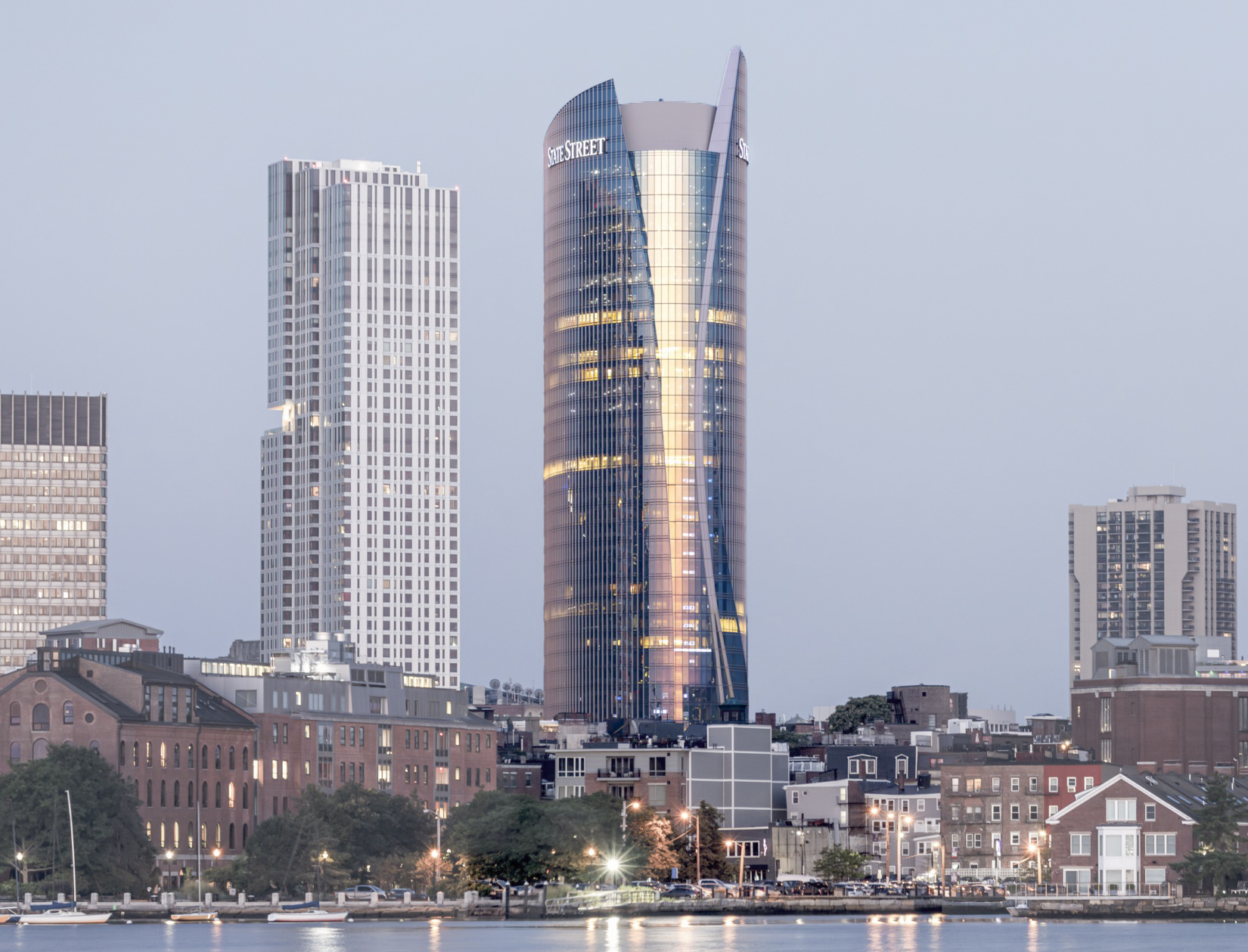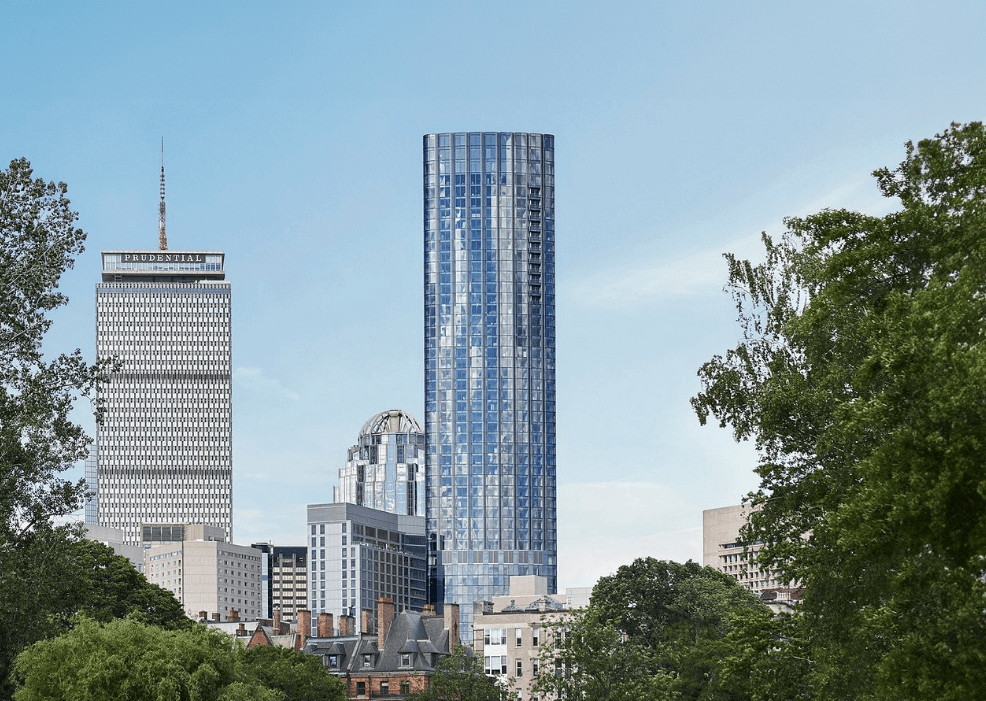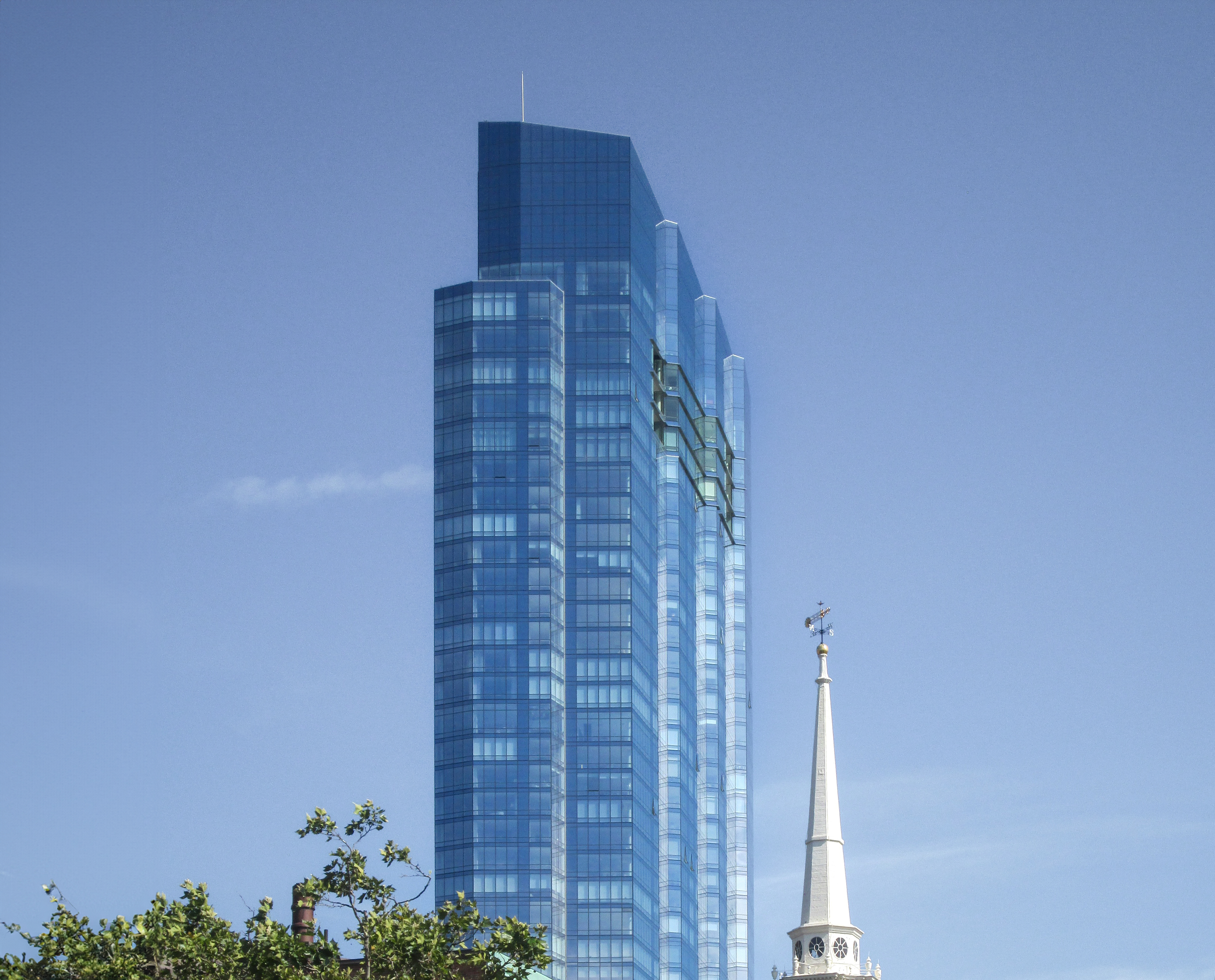The One Congress Building is a Contemporary skyscraper designed by Pelli Clark & Partners, with Cesar Pelli as lead architect, and built between 2019 and 2023 in Boston, MA.
One Congress Building is not the only name you might know this building by though. It is common for companies to want to attach their names to iconic buildings when they move in, or for the general public to come up with nicknames, and this one is no exception. The One Congress Building is also known, or has been known as, State Street Building, or One Congress Street Tower 2.
Its precise street address is 1 Congres Street, Boston, MA. You can also find it on the map here.
The building is part of the Bulfinch Crossing, which also includes a residential tower.
The One Congress building was built on a massive, partially demolished concrete structure that once housed a garage, which for many years divided several neighborhoods in the city. At street level, the tower’s base extends toward a public plaza and a pedestrian corridor that connects to City Hall Plaza. The lobby is bright and welcoming, softening the boundary between public and private spaces.
On the eleventh floor, a one-hectare rooftop garden provides a green oasis in the heart of the city, inviting people to work outdoors or enjoy an afternoon break beneath the trees.
At the time of its completion in 2023 the One Congress Building incorporated solutions that were quite advanced at the time, these included a MERV-15 air filtration system that captures 95% of airborne particles and provides four air changes per hour..







